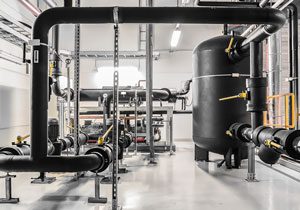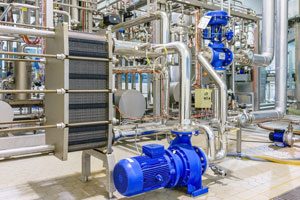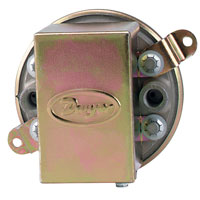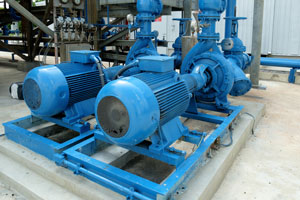Question: What is the difference between true and calculated wet/wet transmitters? Continue reading “Ask the Expert: What is the Difference Between True and Calculated Wet/Wet Transmitters?”
Making Sense of Sensing Pressure
 As discussed in previous articles and videos, pressure is the amount of force acting on a specific area and is equal to the force divided by the area. There are several types of sensing elements used inside pressure measurement devices. By understanding the components that make these products function and carefully comparing their specifications with your application requirements, you ensure the correct instrumentation is being used for your application. Today we’ll be discussing the functions of diaphragms and Bourdon tubes. Continue reading “Making Sense of Sensing Pressure”
As discussed in previous articles and videos, pressure is the amount of force acting on a specific area and is equal to the force divided by the area. There are several types of sensing elements used inside pressure measurement devices. By understanding the components that make these products function and carefully comparing their specifications with your application requirements, you ensure the correct instrumentation is being used for your application. Today we’ll be discussing the functions of diaphragms and Bourdon tubes. Continue reading “Making Sense of Sensing Pressure”
Select Key Pressure Measurements and Their Importance
 Last September, we wrote about the different types of pressure and how each type is referenced. This post discussed atmospheric (barometric), absolute, gage, vacuum, differential, and hydrostatic pressure. For a refresher on these pressure types, click here. This post will expand on last September’s post by listing some more key pressure measurements and explaining their importance. Continue reading “Select Key Pressure Measurements and Their Importance”
Last September, we wrote about the different types of pressure and how each type is referenced. This post discussed atmospheric (barometric), absolute, gage, vacuum, differential, and hydrostatic pressure. For a refresher on these pressure types, click here. This post will expand on last September’s post by listing some more key pressure measurements and explaining their importance. Continue reading “Select Key Pressure Measurements and Their Importance”
Pressure Monitoring in Pump Systems
Why do the inlet and outlet pressure of pumps need to be monitored? What issues may be encountered if they are not monitored?
 Air compressors, irrigation systems, and heat exchangers all use pumps to push air or water through their systems. If the pressure in any of these systems is too high or too low, it could have serious consequences for the pump, the pipes, or the entire system. Most engineers choose pumps that operate 80-110% of their Best Efficiency Point (BEP), the point on the curve where the pump is most efficient. Pump performance will suffer if the pump is operating outside of the BEP, so it is important to monitor pressure to ensure you are getting the most out of your pumping system. Continue reading “Pressure Monitoring in Pump Systems”
Air compressors, irrigation systems, and heat exchangers all use pumps to push air or water through their systems. If the pressure in any of these systems is too high or too low, it could have serious consequences for the pump, the pipes, or the entire system. Most engineers choose pumps that operate 80-110% of their Best Efficiency Point (BEP), the point on the curve where the pump is most efficient. Pump performance will suffer if the pump is operating outside of the BEP, so it is important to monitor pressure to ensure you are getting the most out of your pumping system. Continue reading “Pressure Monitoring in Pump Systems”
Ask the Expert: High Duct Static Cutout; Low Pressure, Low Cost

Question: Does Dwyer offer a compact, low cost differential pressure switch for high duct static cutout applications? Continue reading “Ask the Expert: High Duct Static Cutout; Low Pressure, Low Cost”




